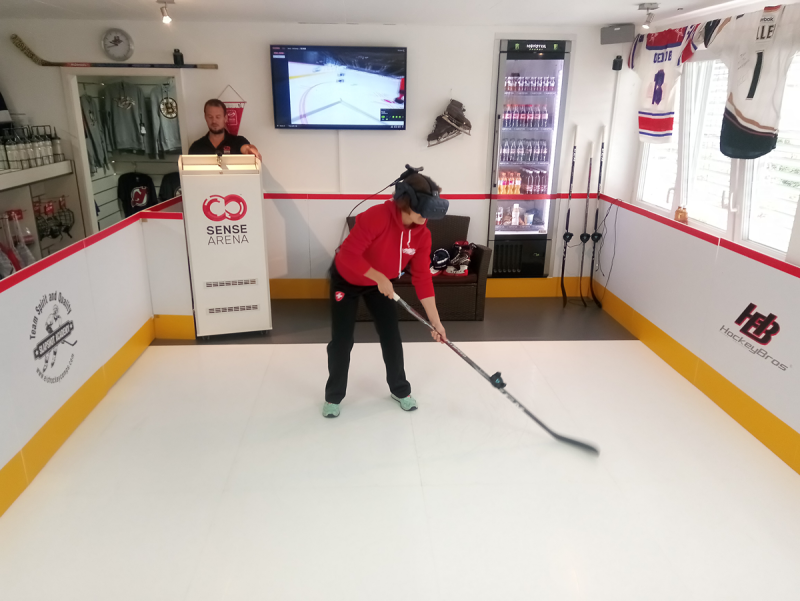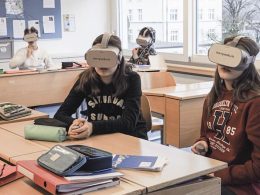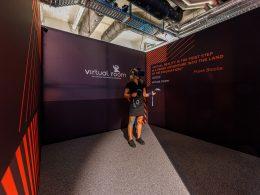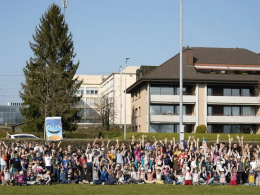Training thanks to virtual reality: the NHL team from Las Vegas already has such a platform. And in Switzerland, too, you can now play and train in virtual hockey.
If you put on the virtual reality glasses, you are catapulted into Madison Square Garden, the legendary arena in the heart of Manhattan. You stand on the ice and look into the empty stands. But your eyes have to be on your teammates and the puck anyway. Although you don't physically handle the puck, you play with it virtually. The stick you hold in your hands is equipped with a sensor on the shaft. The illusion is almost perfect, the stick even vibrates when you receive the puck.
What the NHL team in Las Vegas can do, we can do, too: Switzerland's first platform for virtual Ice hockey stands in Nürensdorf and is called SenseArena. Michael Würsten, 48, runs a hockey shop together with his brother Florian, 46 ("HockeyBros"), where visitors move around on a field of synthetic ice, five by four metres and bordered by boards. The platform has been accessible here for a good two months, and word has already spread among experts. Even ZSC sports director Sven Leuenberger has already been there.
NHL top scorer David Pastrnakist idea generator and shareholder
Around 80 exercises are available, and they are constantly updated. Sense Arena was developed in 2018 by a start-up in Prague, also in collaboration with former NHL crack Patrik Elias and current NHL top scorer David Pastrnak (Boston), who is also a shareholder. Currently, 26 platforms are operated worldwide.
The Czech clubs Liberec and Dukla Jihlva have one, and Stockholm has one. But most of them are overseas: the Washington Capitals bought one for their juniors, and the best PR was that recently the Vegas Golden Knights also became the first NHL team to buy a console. The NHL franchise not only uses the device for the players, but also makes it available to the fans.
Is it also good for real training?
Is the platform a videogame de luxe, or can hockey players actually learn something from it? The Czech Vlasti Okrucky is head of youth development at SC Weinfelden, scout for the Young Lions Thurgau, runs Slapshot camps - in Nürensdorf most of the Sense Arena trainings. He brought the console to the attention of the Würsten brothers and acquired it with them; together the three now have the general agency for Switzerland. The junior coach, who has been in Switzerland since 2009, says: "Many players tell me they benefited from it when making decisions on the ice. It's a good way to train hockey intelligence."
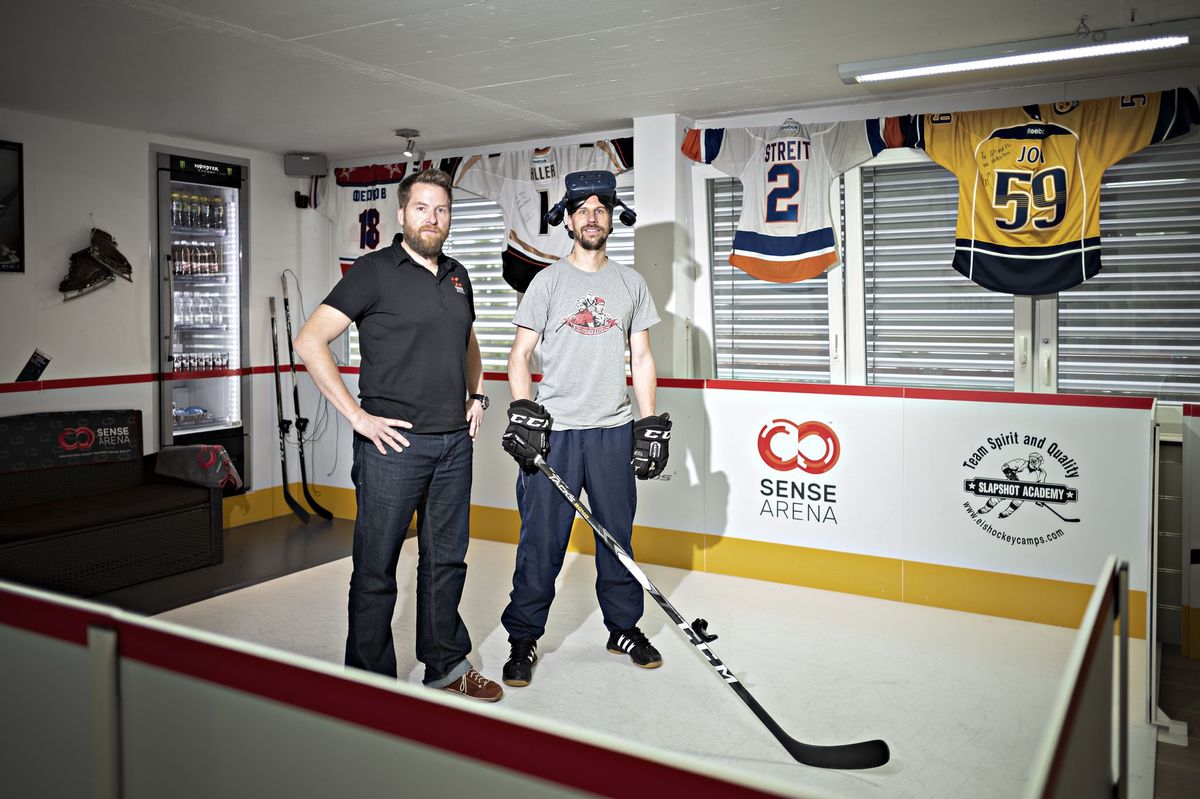
Many exercises aim to promote quick thinking. To process different things at the same time, to keep track, to react quickly. Vlasti Okrucky thinks that the learning effect is greatest with teenagers. But professionals could also benefit, as can be seen at Pastrnak.
Every week, the 39-year-old conducts around 20 to 30 lessons, and the trend is rising. The players who are serious first take a baseline test to determine their strengths and weaknesses. Based on these, the hockey expert draws up a training plan. A 40-minute training session costs 59 francs, a five-session subscription 279 francs. The parents have to put some money in their hands.
The gaming generation is used to the flood of stimuli
The big advantage over ice training is that you can work on certain things in a very concentrated way, says Florian Würsten: "With us, you have 30 direct shots in 90 seconds. The sessions are intense and make your head tired. The gaming generation is better accustomed to the many stimuli. The young ones also make up the majority of those who train here.
Would it also be worthwhile for a National League club to invest in such a platform? It costs 6500 francs plus a monthly licence and support fee of 1600 francs. There is a cheaper version for private use. The price is high, still too high, says ZSC sports director Leuenberger. But that is not the decisive factor, he says. "If you want to operate this platform seriously, you have to assign a coach to it who knows it inside out. And as a club you have to ask yourself: wouldn't we rather have this coach on the ice?"
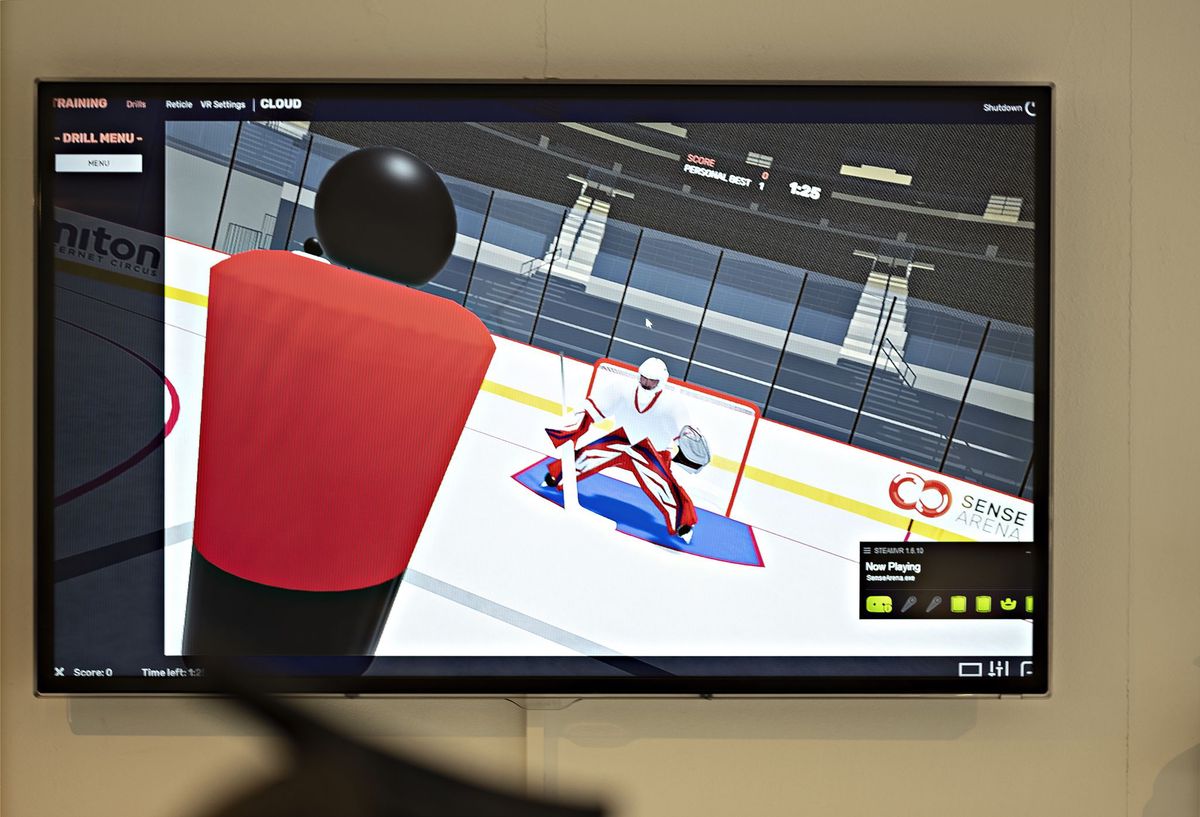
Leuenberger believes that virtual ice hockey can definitely help a player in terms of overview and hand-eye coordination. What is not trained is the skating. And the platform also reaches its limits in terms of stick technique, because you don't physically control the puck.
Vlasti Okrucky works very intensively with the device, constantly sends input to the head office in Prague about which exercises are still needed: "Right now they have integrated new exercises that I suggested: Give and go (double pass) and over and under count situations. That's how the platform is constantly developing.
That is the great advantage of virtual reality: it can be modelled at will. That is why it is constantly conquering new areas.
Source: Tagesanzeiger / hockeybros





